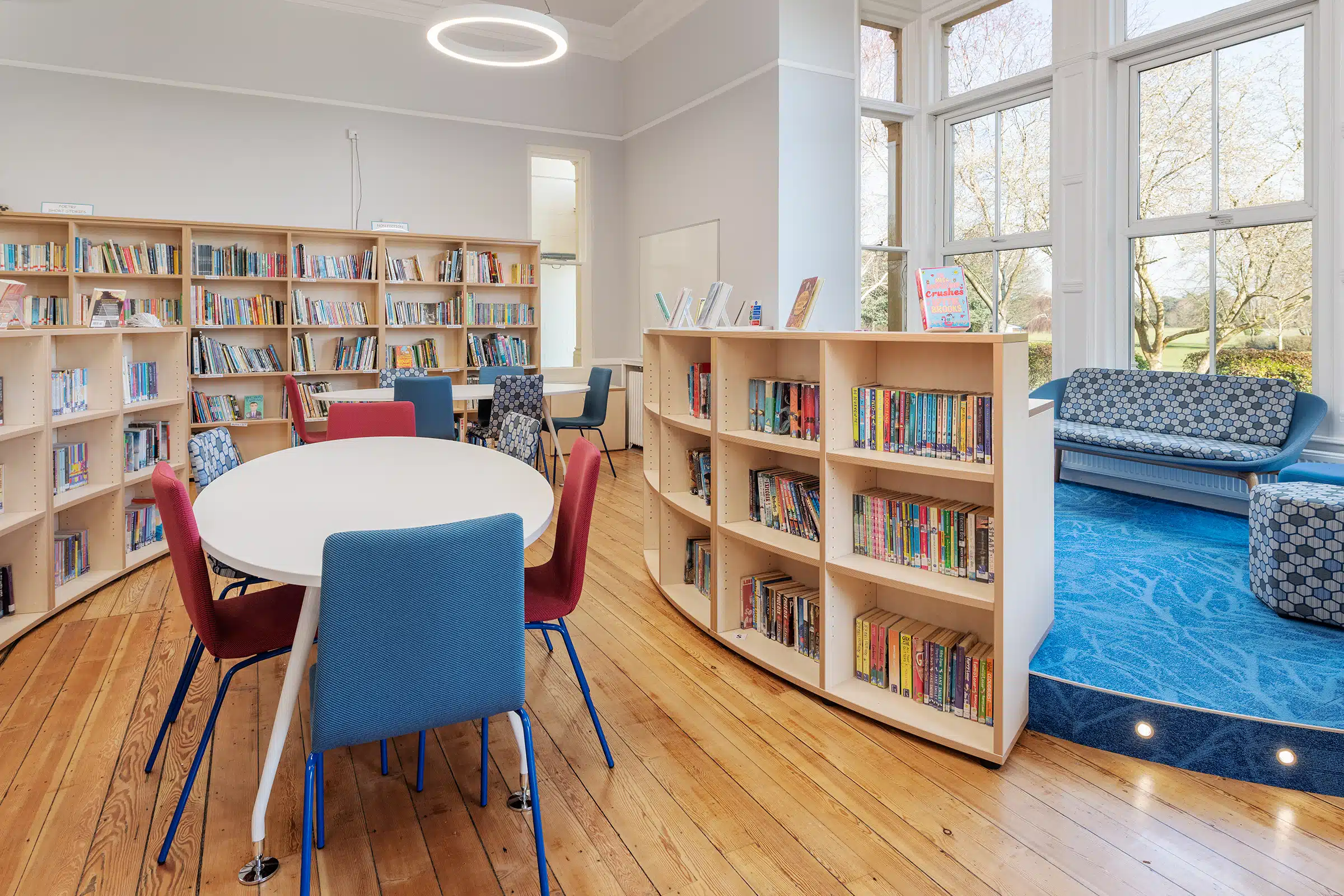What Type of Furniture is Used in School?
Jan 9, 2025 • 5 minutes

Take a moment to think about all the different areas in a school. The classroom, library, science lab and even outdoor playground all have one thing in common: furniture. It is not something we often give much thought to, but these spaces would struggle to support the daily routines of students and staff without it. Chairs, tables and storage units are not just there to fill a room. They are there to help students learn, eat, play and grow.
If you are setting up a new classroom or looking to improve an existing space, knowing which types of furniture work best for your school can have a huge impact on how effectively they are used each day.
What is Educational Furniture?
Educational furniture is just furniture that you put in schools, right? Not quite. Unlike the furniture you might use at home or in the office, educational furniture is designed to meet the unique demands of a busy learning environment. This furniture is used by hundreds of students every day, year after year, and often in ways that regular furniture would not need to cope with. Because of this, it has to be tougher and more practical, with important safety features to account for younger children’s’ curiosity.
While these considerations apply to most educational furniture, it is far from one-size-fits-all. Each space in a school has its own needs, and the furniture should reflect this. With that in mind, let us take a closer look at the types of furniture found throughout a school and what makes it fit for purpose.
Types of Educational Furniture
Classroom Furniture
Classroom furniture is designed to create a space where students can focus and learn comfortably. Desks and chairs are the most important pieces, chosen to fit the size and age of the students. This helps them sit properly, stay comfortable and concentrate during lessons. These desks are often made from laminated wood and metal frames, ensuring they can handle the wear and tear of daily use by busy classrooms. Teachers also need desks that are practical and well-organised, with enough space for planning lessons, marking work and keeping important resources close by.
Additional pieces of furniture help the classroom stay organised and engaging. Whiteboards, positioned at the front of the room, provide a space for writing notes, drawing diagrams and explaining new ideas. Pinboards add a more personal touch, displaying student work, classroom rules or important reminders which makes the space feel more connected to the students.
Open shelving and cubbies are used to store books, stationery and other learning materials, keeping them neat and easy to access. In classrooms for younger students, colour-coded bins or labelled compartments encourage independence by helping children find and put away their belongings. These pieces of furniture work together to create a classroom that is ready to support learning.
Library Furniture
Library furniture is designed to create a calm and welcoming space where students can read and study. Shelving is one of the most important features, made from sturdy materials like reinforced wood or metal to safely hold books of all sizes. Varying shelf heights ensure students of different ages can easily reach the books they need, while display units are used to showcase new arrivals, themed collections or popular titles to encourage browsing.
Seating is another key part of the library, with comfortable reading corners featuring plush chairs, bean bags or cushions to give students a cosy spot to get lost in a book. For focused work, study desks or carrels provide quiet spaces where students can concentrate. Larger tables are available for group research projects or study sessions, allowing students to work together effectively. Careful placement of these areas ensures that noise from group work does not disturb those focusing on quiet tasks, keeping the library functional for everyone.
Outdoor Furniture
Outdoor furniture in schools helps make outdoor spaces more practical and enjoyable, whether students are playing, eating or studying outside. Benches and picnic tables are some of the most common types of outdoor furniture. They provide places for students to eat lunch, chat with friends or even take part in lessons on sunny days. These are often made from materials like treated wood, metal or plastic because they can handle rain, wind and sun without wearing out quickly.
Storage is also important in outdoor areas, with sheds or weatherproof boxes used to keep sports equipment and playground toys tidy and protected. In larger outdoor spaces, shaded seating areas are a welcome addition, giving students somewhere comfortable to rest or gather when the weather is warm.
Specialised Furniture
Specialised rooms like science labs and music rooms require furniture specifically designed to support the activities that take place there. In science labs, sturdy benches built with chemical-resistant surfaces allow students to work comfortably while standing, which is necessary for conducting experiments and observing reactions. Stools are paired with these benches to give students the flexibility to sit or stand as needed. Secure storage is also vital for keeping chemicals and equipment safely out of reach when not in use.
Music rooms have furniture designed to support both practice and performance. Chairs are chosen to promote good posture, especially for playing instruments during long rehearsals, while adjustable music stands make it easy for students to read sheet music at the right height. Instrument storage, such as lockers or shelves, keep valuable equipment safe and accessible.
Art rooms have their own unique needs, such as large work tables that provide enough space for painting, drawing or working with clay, as well as drying racks to store finished pieces. While their furniture overlaps with general classroom use, these additional features ensure they can support creative and practical activities effectively.
Transform Your School with Westcountry Group
At Westcountry Group, we believe that well-designed school furniture is the foundation of effective learning environments. With over 45 years of experience in designing educational spaces, we are dedicated to creating classrooms that inspire, engage and support students of all ages and abilities. Here is what teachers and staff had to say about our work.
Contact Westcountry Group today to discuss how we can help transform your classroom — call 0330 030 0330, email: sales@westcountrygroup.com or visit our website.






